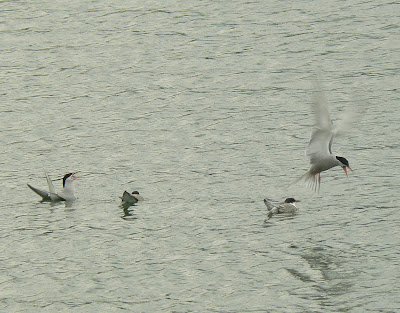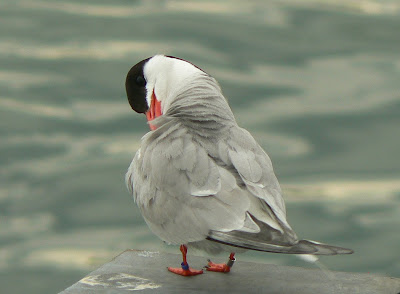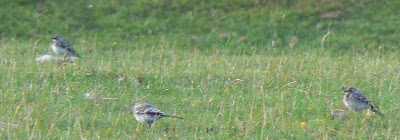Awake early I decided to go with my instincts rather than the weather forecast but at 05.30 it was grey, leaden and a fine drizzle but I thought it might clear up. My first attempt at a photo resulted in exposure of over two seconds, which hand held isn't going to get you far. 

Newton marsh was once again very quite so on to Lytham. The sky was grey and 'stormy' but out to the west there was a clear gap on the horizon and my guess that it would brighten up from the west appeared justified. Inland it looked awful. Nothing showing at Lytham Green. Fairlawn Road provided Pied Wagtail and Swallow again along the wall, together with a juvenile Meadow Pipit, that led me a merry dance and took about thirty minutes to identify, simply by popping in and out of the grass along the sea wall and the light was still appalling. In the Bay, 60+ Redshank, 60+ Oystercatcher, the usual assortment of Gulls of various ages, Lesser Black Backed, four Canada Geese from Fairhaven Lake and a Whimbrel.

A quick trawl around Fairhaven Car Park and a look at the lake and on to Fairhaven Dunes. By this time a couple of hours had passed and the dog walkers were out in force. Around the Dunes more than 20 Meadow Pipits were being constantly disturbed by the dog walkers, so the trick was to get 50 yards in front of them and wait for the birds to be flushed towards me! Just as I was departing another juvenile Meadow Pipit appeared close by and spent ten minutes calling for it's parents who eventually turned up. I was surprised to see a pair of Reed Buntings at the edge of the dunes while the Common Whitethroat was found again in the same hawthorn adjacent to the road. By now the 'pair of sailors trousers' (a patch of blue sky) had increased and the sun was out and the sky blue! As a consequence a number of Meadow Browns had taken to the wing. One of my favourite plants the Sea Holly was just coming into flower... my visit just a few days too early, one of the reasons I'd decided to pop down this way again. It is really one of those desert plants, a Xerophyte (a plant capable of surviving in an environment with little fresh water... one for the Scrabble board!) and remarkably a member of the carrot family. And finally a Tufted Duck by Fairhaven Lake before dashing off to do what a man has got to do.
| Powered by website analytics technology. |

















































